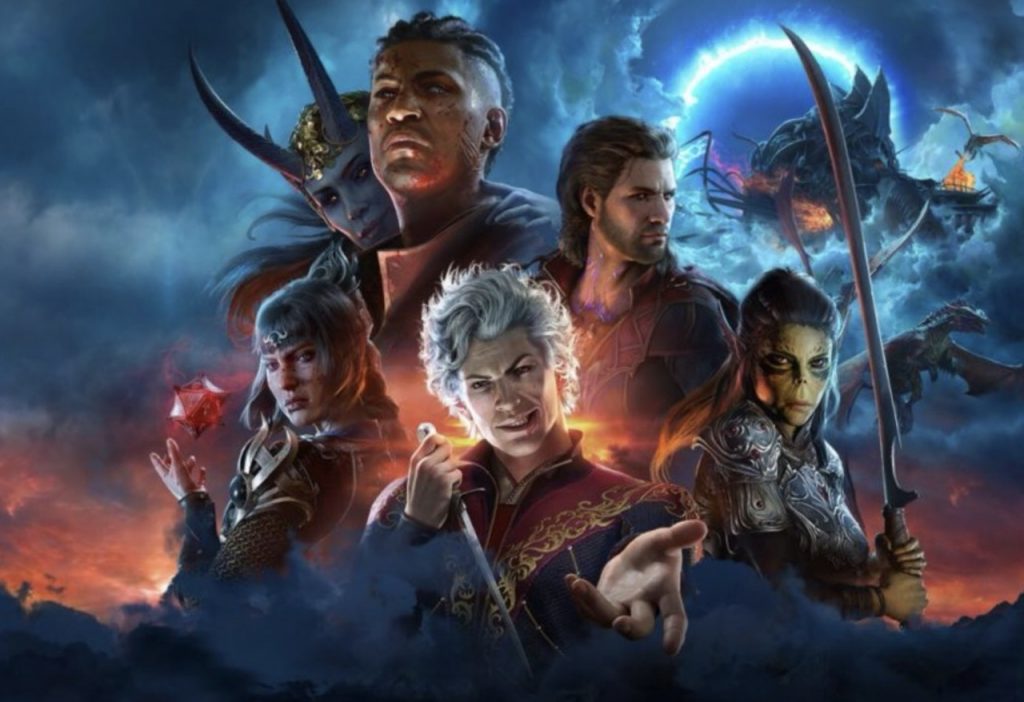 Baldur’s Gate 3, from the acclaimed Larian Studios courted praise long before its release due to the already adored world-setting, uptick in Dungeons and Dragons media and playing in the last few years and in no small part due to Larian’s track record.
Baldur’s Gate 3, from the acclaimed Larian Studios courted praise long before its release due to the already adored world-setting, uptick in Dungeons and Dragons media and playing in the last few years and in no small part due to Larian’s track record.
With the dust surrounding its release having had time to settle and the immediate review furore having calmed down – how will we find it in our slightly retrospective review. Having written that, I now need to mention my own bias (as is typical for my somewhat overwritten and wordy reviews). I remember playing Baldur’s Gate 2: Shadows of Amn in my early childhood on a friend’s Windows 95 PC in all of its isometric glory – even if I couldn’t get to grips with the controls and the crunchy numbers that DND (particularly older iterations) works on.
With that out of the way – let’s get into the game. Well, sort of – due to the fact that I’ve now had the chance to log north of 100 hours, and much like playing actual DND, I can’t stick to a single character build… Regardless of how you choose to start the game, with a pre-built character or your own level 1 creation, you will begin almost 120 years after the events of Baldur’s Gate 2 – and miles away from it.
Awakening aboard an Illithid ship (think of a humanoid Cthulu-esque creature to imagine an Illithid – or a mind flayer if your DND knowledge extends to Stranger Things) and being implanted with a sort of tadpole you are quickly attacked by Githyanki soldiers… riding dragons… let it never be sent you were gently brought into this story.
Similar to Larian’s previous acclaimed work, Divinity 2: Original Sin, you begin in a somewhat walled off area as you are given a crash course on the controls of how to fight, explore, talk and so forth. More on that crash course though – as crash is what you do. The ship crashes into the world of Faerun, the wider world in which Baldur’s Gate is set.
Free of your captors, but still with evil mind-control tadpoles in situ, you set out into the world to solve your newly acquired problem alongside a host of diverse and unique companions. However, much like a DND campaign – the strange sidequests and time with your companions is what can really make the journey and in this case, the game, so unique.
The sheer volume of dialogue in the game is nothing short of spectacular. Alongside the baffling amount of freedom you have in this game, it’s the closest you can come to tabletop freedom in a video game. Don’t have a key that would otherwise be a ‘key item’ or a plot device – just hack it down, burn it, pick it, hurl someone through it. Concerned that the goblin gang might be too hard to beat in a straight fight? Rig the area to explode, or get chatty and talk your way through things – the world really is yours to explore, and none of my playthroughs have gone even similarly, let alone the same.
A LOT has been written about the companions and NPC’s at large in this game, and there has been a particular bent to how romanceable the world is. It is, and if I have one criticism of the game it’s that it almost tries to steer you towards these options in what can be described as in the name of fan service. But whether you think this is a great feature or not, the characters; from Karlach the lovable Tiefling Barbarian, to Astarion the charming vampire or Shadowheart, the aptly named moody Cleric – are what make this world so alive and what make this game so engaging that it demands several playthroughs just to discover the nuances depending on your actions and how the world responds.
Combat can take some getting used to, not quite fully turn-based like an older JRPG, but not a free-for-all brawler, the CRPG top down view can be jarring. But once you’ve learned your spells and abilities and how you want to deal with enemies, setting up fantastic combos and the feel of rolling a Nat 20 and landing a critical hit in a clinch is just as thrilling on screen as on the table – and the AI is smart enough to make you want to scream at the DM as it responds to your strategies.
Baldur’s Gate is an extremely special game, verging on unicorn territory. It ticks SO MANY boxes that make a great game, and continues to exceed them. The narrative is slick and responsive, combat and dialogue are engaging, characters are simply some of the best to ever grace a video game and should even be making the likes of Bioware (who have made previous Baldur’s Gate games) and CDProjekt Red sit up and pay attention.
Whether it be solo, with friends online or even couch co-op – Baldur’s Gate 3 is simply a must play game, and if you needed a reason to upgrade your PC or buy the latest console as well as a screen to do it justice, this is it.
Author: Tom, Cardiff Store







